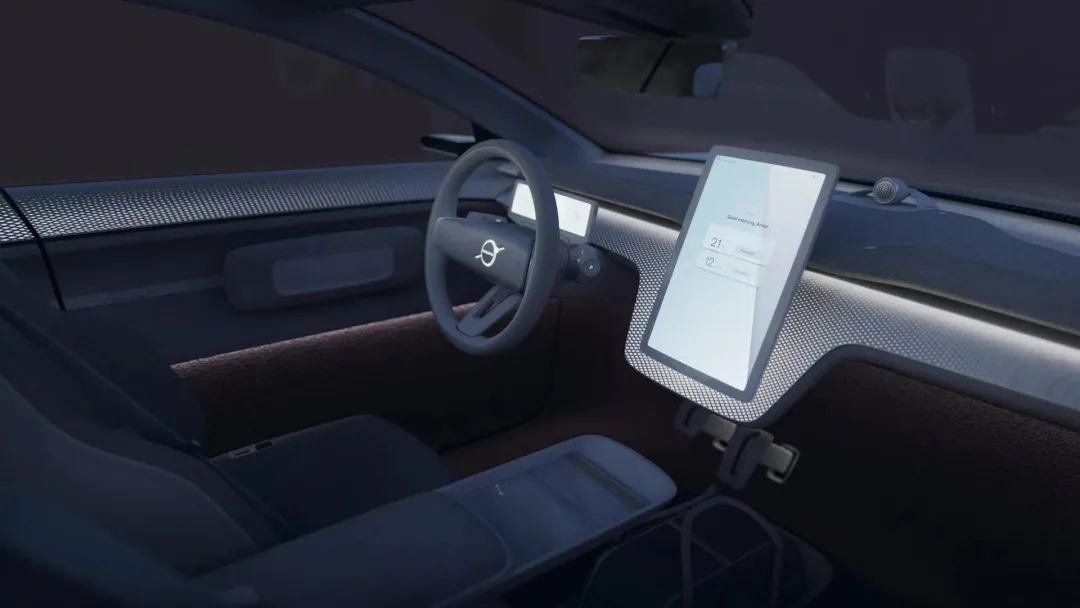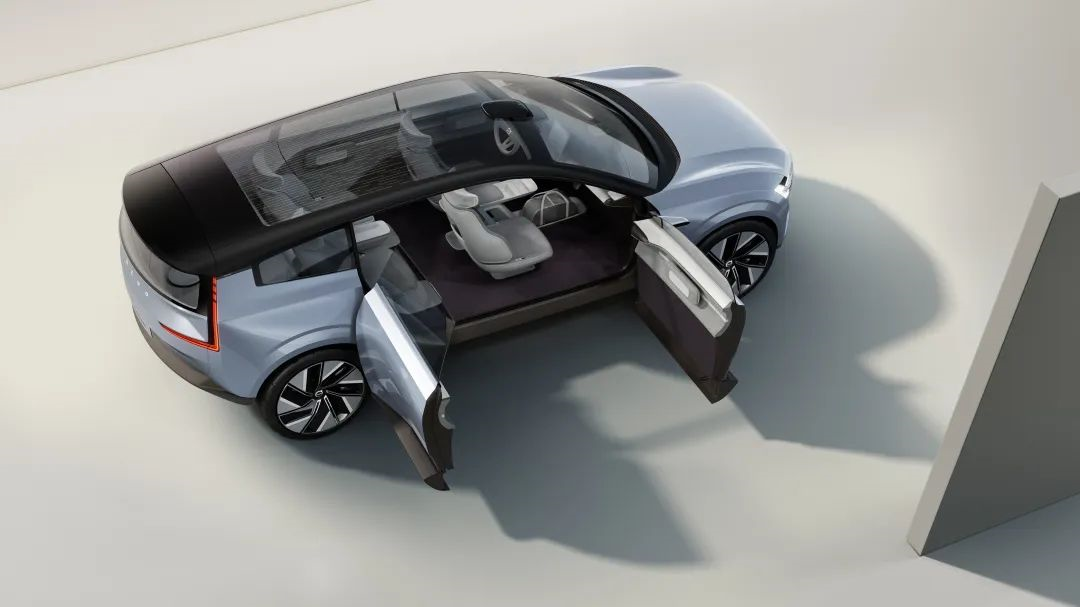Author: Wang Xuan
On July 6, Volvo Cars kicked off the journey of the second half of 2022 with a “Moose Public Lecture”. Interestingly, this event was held in the one-way space bookstore founded by writer Xu Zhiyuan, with a comfortable environment and books and magazines on the shelves around, stimulating people’s thinking.
At a certain moment, I suddenly felt that automotive brands and books are the same. There must be something in common behind their long-lasting popularity.
Books are one of the oldest media for conveying information. We may think that the Internet has a huge impact on traditional books, but in fact, it is not the case. The new things bring better experiences, which is beyond doubt. The affirmation of “if you can watch a video, why read text” conveys that videos can present information more intuitively.
However, the change in the intrinsic characteristics has led to the rapid evolution of information media. Just like blogs have disappeared from our lives, books are still popular because books have the characteristic of conveying complete and logical content, which is very different from the fragmented information in short videos. This characteristic has also become the barrier to their long-lasting popularity.
Volvo is the same. They have encountered many challenges in the past 95 years, which may give later-comers some inspiration.
Now, young new forces in the automotive industry are bringing more new ideas, and in the past five years, we have seen too many people who are “elegant when building high-rise buildings” and “painful when dealing with difficulties”. There are many new players and technologies, but more than half of them have been eliminated in a continuous process of change. Therefore, I am more interested in understanding what qualities a car company needs to have in order to thrive in a constantly changing environment, as it matures from being young.
During the public lecture, three qualities were mentioned: “safety, simplicity, and smoothness”. Although they were used to describe the car system, I think a subtle characteristic is enough to reflect in a product, a company.
Safety: From Passive Safety to Zero Accidents
Perhaps you would think that “safety” is a cliché in the context of Volvo, but today’s content is somewhat different.
What Volvo has done in the past, present, and future in terms of vehicle safety corresponds to passive safety, active safety, and zero accidents. And the most mentioned this time is zero accidents.
People always make mistakes, and the way to avoid mistakes is to hand over the driving power to a machine that will never tire or be distracted. In most people’s impressions, Volvo’s image is closer to “old money”, a brand pursued by consumers in the past era and relatively conservative. In fact, Volvo’s acceptance of new things is much higher than we imagine, especially in the field of autonomous driving.The first model in China that comes equipped with Level 2 assisted driving as standard is the Volvo XC90, back in 2016. Although high-end sedans of BBA and Tesla Model S also had Level 2 assisted driving function at that time, only Volvo made it standard. This is because as early as 2012, Volvo launched a concept car for automatic driving based on the S60 model, named Drive Me, which was among the first batch of car companies to invest in automatic driving research and development in the industry.
Today, Volvo is investing in the “future” of autonomous driving, mainly focusing on perception hardware, autonomous driving algorithms, and autonomous driving ecology.
In addition to basic high-definition cameras, millimeter-wave radar, and ultrasonic radar, the next-generation Volvo product’s autonomous driving perception hardware will also include LIDAR. Volvo chose to cooperate with the Silicon Valley technology company Luminar and adopted its mass-produced Iris second-generation vehicle-grade LIDAR, which has 300 lines and operates at 1550 nm. Currently, the industry generally uses LIDAR with 96 lines and a 905 nm wavelength.
300 lines correspond to 300 vertically arranged lasers, which are converted into a surface through a one-dimensional prism. The greater the number of lines, the greater the amount of point cloud and resolution will be significantly improved.
The 1550 nm wavelength is a crucial parameter because it is closely related to other participants on the road. The human eye can perceive light waves between 360-400 nm and 760-830 nm. In this wavelength range, humans can sense seven colors: red, orange, yellow, green, blue, indigo and violet. When encountering strong light within the range of human perception, one can avoid it. However, the 905 nm wavelength exceeds the range of human perception. If the power is fully turned on, it can penetrate the human eye lens and directly shoot onto the retina, causing harm that humans cannot sense.
Therefore, to avoid injury to humans, the use of lasers with wavelengths between 400-1400 nm must operate at low power. Infrared light with wavelengths above 1400 nm will be absorbed by the anterior chamber of the eye before reaching the lens and cannot be concentrated into a point-shaped light to reach human retinas. Therefore, it is safer and can be used at high power.## This is a manifestation of responsibility
This is a manifestation of responsibility, just like the regulations in the Road Traffic Safety Law. Each road participant not only needs to be responsible for themselves but also for others. In addition to the damage caused by accidents, equipment should not harm the health of others.
Volvo will also be equipped with 4 Orin X chips from Nvidia as a computing platform, with a total computing power of over 1000 TOPS. In terms of algorithms, Volvo has not only cooperated exclusively with Waymo but also has its own autonomous driving software development company, Zenseact.
Volvo and Zenseact jointly invested in the establishment of a “data factory,” which will process more than 225 million GB of data in the next few years. Of course, Volvo is also concerned about data security and privacy issues. Only after user authorization will Volvo collect user driving data.
V2X is an important tool for the landing of advanced autonomous driving systems. In the Internet of Vehicle ecosystem, Volvo first recommends the wet and slippery road warning system, using cloud interconnection to push danger warnings to surrounding vehicles.
The above is Volvo’s layout for the future, but why not now?
In my opinion, this is a manifestation of responsibility. The use of lidar and high computing platforms in cars is no longer something new. However, after users pay for the hardware costs, they cannot get an experience that matches the cost. This is still an unsolved problem. Car companies need to be responsible for the cost of their products and the cost of users buying cars. Slow action does not mean it’s not possible. For Volvo, they are just thinking about when it is more suitable to deliver users.
Conciseness: Unification from design to logic
In the eyes of many people, Volvo’s cabin atmosphere has a simple style like IKEA, which may be the style born under the influence of Nordic lifestyle. Volvo’s products not only have simple qualities in design style but also feel it in some product logic. Here are two examples.
The opening logic of Volvo’s advanced driving assistance system is clearer than the traditional mode.
In the traditional model, users must first turn on the ACC adaptive cruise control system and then choose whether to turn on the lane keeping system to combine into a complete L2 auxiliary system.
Volvo directly provides two mode selections: advanced driving assistance and navigation assistance. Advanced driving assistance corresponds to the ACC function, and in navigation assistance, ACC and lane keeping will be directly turned on. Users only need to select it through the button on the left side of the steering wheel to turn it on with one click, and the learning cost is lower.The second point is the interactive design of the car infotainment system. Currently, Volvo also adopts the mainstream interactive method of voice control and touch screen control.
However, unlike other manufacturers, Volvo prepares a HOME button for users below the car infotainment screen. With more and more applications available in the car infotainment system and more information that can be controlled within it, the interaction hierarchy of the car infotainment system becomes more complicated. In the driving scenario, users need to perform operations more easily, and the HOME button can help users quickly return to the homepage.
At the same time, the layout of the homepage also reflects a “distinguishing between primary and secondary” philosophy.
Many carmakers nowadays like to put more information on the homepage to highlight the richness of the content. However, the more information there is on the homepage, the more difficult it is for users to capture the target information while driving. What Volvo does is to filter the user’s frequently-used information, such as navigation, music, and mobile connectivity, and layout them in the homepage, while other ecological information is placed in the application menu.
Thanks to its clear logic, in 2015, Volvo defeated BMW, Mercedes-Benz, and Audi in Germany and won the highest honor of the automotive human-machine interaction system.
Smoothness: Empowering experiences with cutting-edge technology
Not long ago, Volvo and the world’s top gaming company Epic Games announced their cooperation and will carry out a series of collaborations in the automotive field.
One of Epic Games’ most competitive products, the famous game development engine – Unreal Engine, will be applied to Volvo’s next-generation all-new electric flagship model to be launched. Through realistic visualization technology, it provides a realistic visual effect for Volvo’s digital cockpit.
As a result, Volvo will also become the first European automaker to develop HMI interfaces using Unreal Engine. Volvo plans to apply Unreal Engine’s graphic features for the first time in the next-generation all-electric flagship model, which will be unveiled before the end of 2022.
At that time, we interviewed Thomas Stovicek, the head of Volvo’s user experience and interaction design business, and learned about the initial intention behind the partnership between the two companies.The difficulties and challenges faced by the gaming industry or gaming technology are very similar to those faced by the automotive industry. For example, in the process of playing video games, many players require rich and immediate immersive feelings and environments to better play the game. Our requirements in the automotive industry are the same, such as using this technology to better realize the interaction between the human-machine interface and car owners or passengers.
This is how Thomas Stovicek explained the close collaboration between Volvo and Epic Games over the past few years.
We will further apply Epic’s Unreal Engine technology on Volvo’s next-generation electric models. At the same time, we hope to further integrate Epic’s development tools with Volvo’s customer requirements in the design and development process to provide customers with better and more complete experiences.
There are many opportunities and good ideas for further exploration between the two parties in the future, and to provide customers with better solutions.

Finally,
Nowadays, many consumers tend to focus on idealists who pursue “blind running”. However, if you want to have sustainable development, you cannot blindly pursue “new and fast”, but need to think about the core values of the enterprise and the core needs of users.
There are too many examples in the automotive industry where pursuit of new technology has backfired and have not been implemented. A good product requires a good experience, not just a good story.
This article is a translation by ChatGPT of a Chinese report from 42HOW. If you have any questions about it, please email bd@42how.com.
